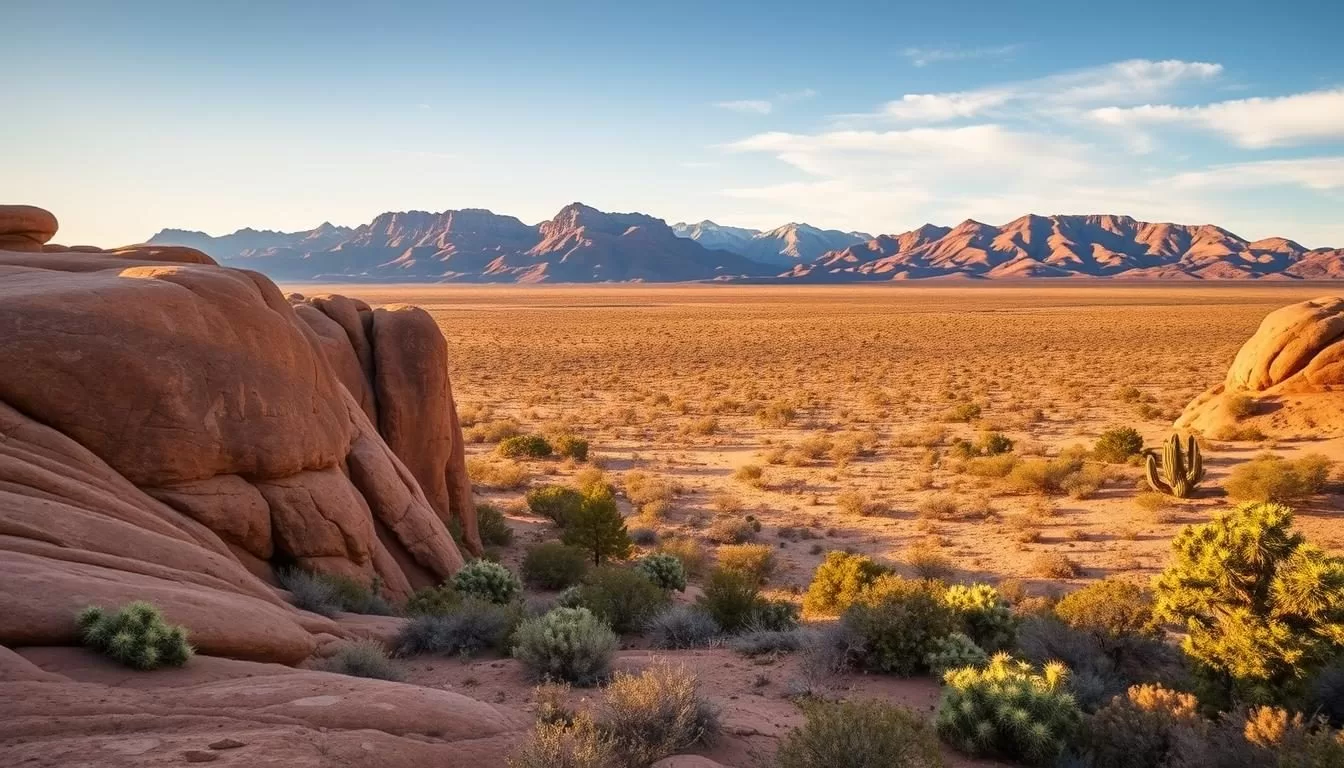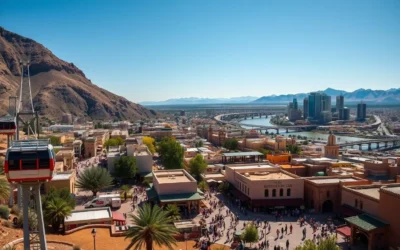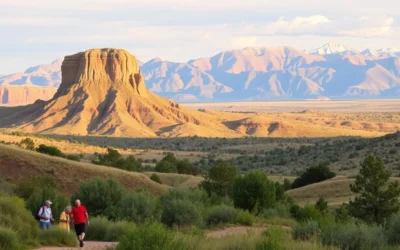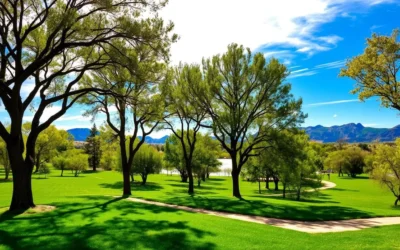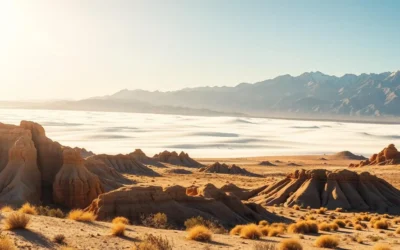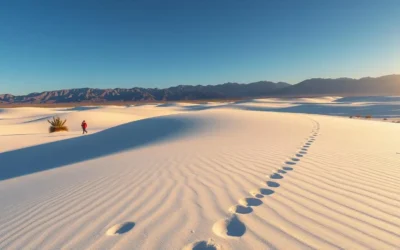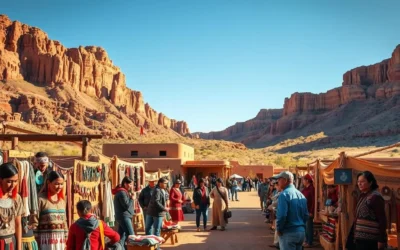✓ Accommodations ✓ Flights ✓ Rental Cars
Discover the Petroglyph National Monument, one of North America’s largest petroglyph sites, located in Albuquerque, New Mexico. This incredible monument preserves over 24,000 ancient rock carvings, created by ancestral Pueblo peoples and Spanish settlers around 400-700 years ago.
As you visit the monument, you’ll explore three main trails that showcase the majority of the petroglyphs. The monument is cooperatively managed by the National Park Service and the City of Albuquerque, ensuring a unique cultural and natural experience. With its stunning desert landscapes and rich history, this national monument is a must-see destination for anyone interested in history, culture, and the great outdoors.
Discovering Petroglyph National Monument
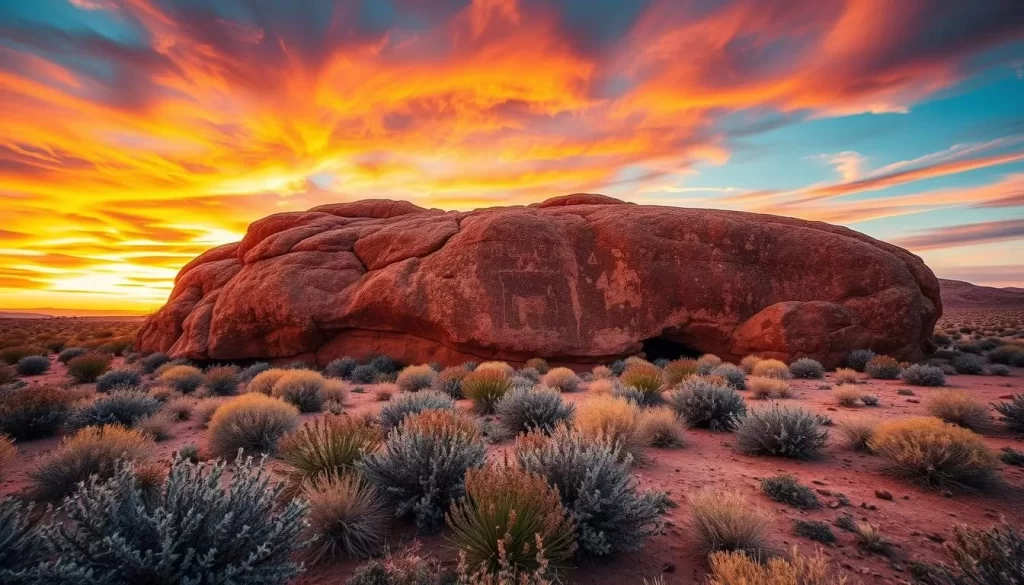
Nestled in the heart of Albuquerque, Petroglyph National Monument is a hidden gem waiting to be discovered. This unique national monument is not only a significant cultural site but also a remarkable natural area, offering a blend of history, archaeology, and outdoor activities.
What Are Petroglyphs?
Petroglyphs are ancient carvings or drawings on rocks, created by early inhabitants of the region. The term “petroglyph” comes from the Greek words “petros” (rock) and “glyph” (carving). These prehistoric artworks provide a window into the lives and cultures of the people who once inhabited the area around Albuquerque.
Historical and Cultural Significance
The Petroglyph National Monument preserves a vast array of these ancient carvings, making it a site of immense historical and cultural significance. The monument protects not just the petroglyphs but also the natural environment in which they were created, offering insights into the lives of the region’s early inhabitants and their interactions with the land.
Monument Overview and Location
The Petroglyph National Monument is located on the west side of Albuquerque, New Mexico, and encompasses 7,236 acres along the West Mesa, a volcanic escarpment. The monument is divided into several distinct areas, including Boca Negra Canyon, Rinconada Canyon, Piedras Marcadas Canyon, and the Volcanoes Day Use Area. Despite being surrounded by urban development, the monument remains a significant natural and cultural landscape, with its sites open daily from 8:30 a.m. to 4:30 p.m. and free to visit.
Essential Visitor Information
Your adventure at Petroglyph National Monument begins with being prepared, and that starts with the right information. To ensure a smooth and enjoyable visit, it’s essential to understand the basics of the monument’s operations and facilities.
Hours, Fees, and Facilities
Petroglyph National Monument is open daily from 8:00 AM to 5:00 PM, Mountain Time. The monument is free to visit, although some activities may incur a fee. Facilities include picnic areas, restrooms, and trailheads for exploring the monument’s vast landscapes. The Petroglyph National Monument spans a significant area, offering various day use areas for visitors to enjoy.
Visitor Center – What to Expect
The Visitor Center is the first stop for many visitors. Here, you can obtain information about the monument’s history, geology, and the petroglyphs themselves. Rangers and volunteers are available to answer questions, and exhibits provide insight into the cultural significance of the area. It’s a great place to start your visit, helping you plan your day and make the most of your time at the national monument.
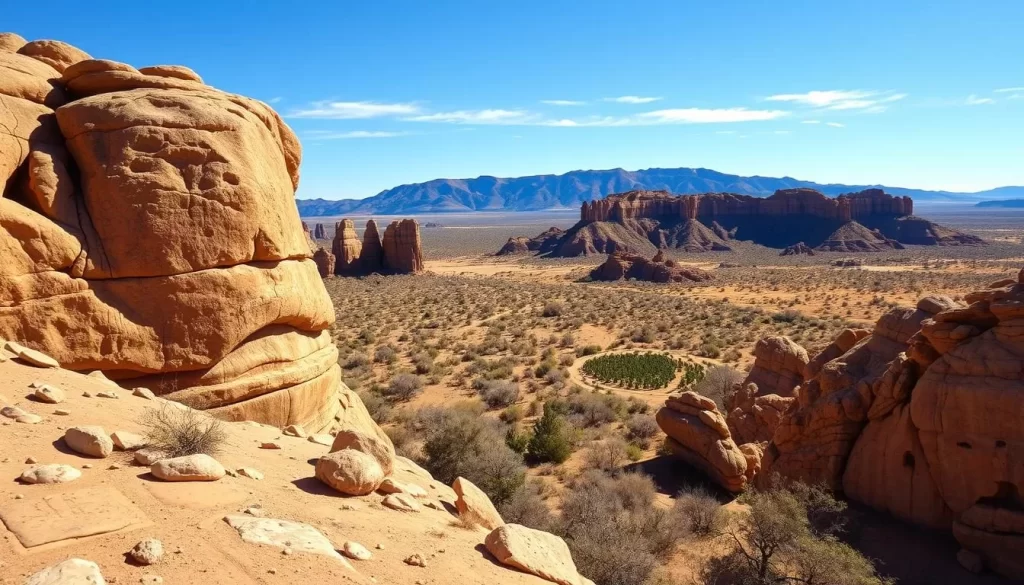
Recent Changes and Updates
As of April 29, 2024, the upper section of the Mesa Point Trail in Boca Negra Canyon was closed due to visitor-created cairns and the removal of rocks from archaeological sites, emphasizing the importance of “Leave No Trace” principles. On May 3, 2024, the new South Point Day Use Area opened, providing access to Mesa Prieta with approximately 200 petroglyphs. Note that this area is still under development and lacks water facilities, so visitors should come prepared. It’s always a good idea to check the monument’s official website or social media for the most current information before your visit.
Top Trails at Petroglyph National Monument
Exploring Petroglyph National Monument’s trails is a great way to experience the area’s natural beauty and historical significance. The monument offers several trails that cater to different interests and mobility levels, ensuring that there’s something for everyone.
Boca Negra Canyon Trail
The Boca Negra Canyon Trail is a popular choice among visitors. It’s a 1.5-mile round-trip hike that features a significant number of petroglyphs. As you hike, you’ll notice the trail is lined with rocks bearing ancient images, providing a glimpse into the lives of the area’s past inhabitants. Be prepared for a moderately challenging hike, as the trail involves some uphill climbing.
Rinconada Canyon Trail
The Rinconada Canyon Trail offers a more leisurely hiking experience. This trail is also relatively flat and wide, making it accessible to visitors with mobility challenges. As you walk along the trail, you’ll encounter numerous petroglyphs, showcasing the artistic and cultural expressions of the ancient people who once inhabited this region.
Piedras Marcadas Canyon Trail
The Piedras Marcadas Canyon Trail is a 1.5-mile round-trip path that contains one of the highest concentrations of petroglyphs in the monument, with estimates suggesting between 300 to 500 petroglyphs throughout the hike. This relatively flat trail is the most accessible of the three main petroglyph viewing areas, making it suitable for visitors with mobility challenges. Notably, the trailhead is located next to a Valvoline oil change station within the city, presenting an unassuming entrance to a hike featuring stunning ancient petroglyphs.
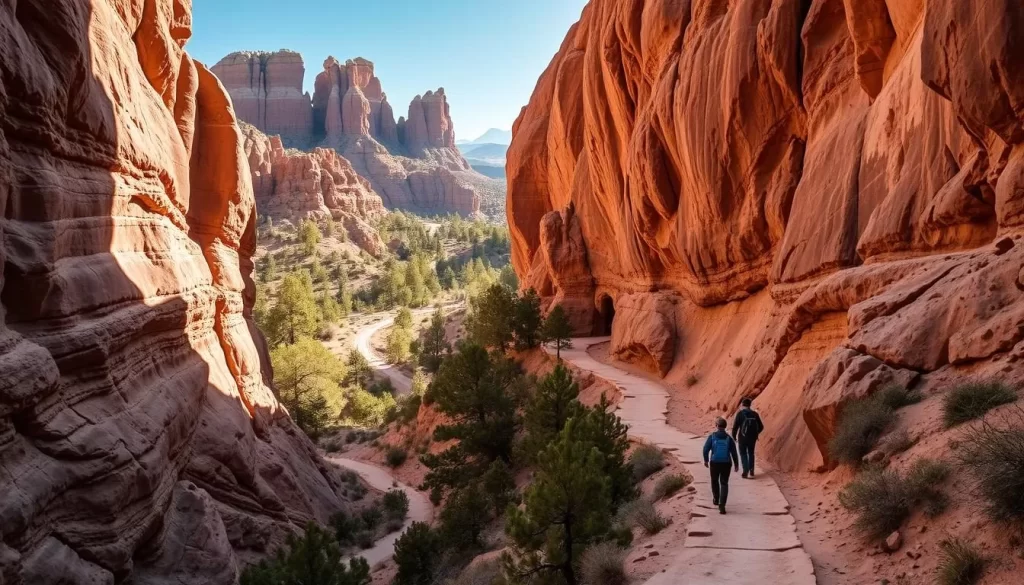
| Trail Name | Distance | Accessibility | Notable Features |
|---|---|---|---|
| Boca Negra Canyon | 1.5 miles round trip | Moderate | Significant number of petroglyphs, uphill climbing |
| Rinconada Canyon | Varies | High | Relatively flat and wide, numerous petroglyphs |
| Piedras Marcadas Canyon | 1.5 miles round trip | High | 300-500 petroglyphs, flat walking trail, urban setting |
When visiting these trails, it’s essential to be prepared. None of the trails have water stations or restrooms, and shade is limited. Ensure you bring sufficient water and sun protection to make your visit enjoyable.
Exploring the Volcanoes Day Use Area
Beyond the petroglyphs, Petroglyph National Monument offers a unique volcanic landscape to explore in the Volcanoes Day Use Area. This area is distinct from the rest of the monument, featuring a trail system that winds through volcanic cinder cones.
Volcanic Landscape and History
The Volcanoes Day Use Area is characterized by its volcanic landscape, which provides a glimpse into the region’s geological history. The area’s volcanic features are a result of volcanic activity that shaped the landscape over time. The volcanic terrain offers a unique setting for hiking and exploration.
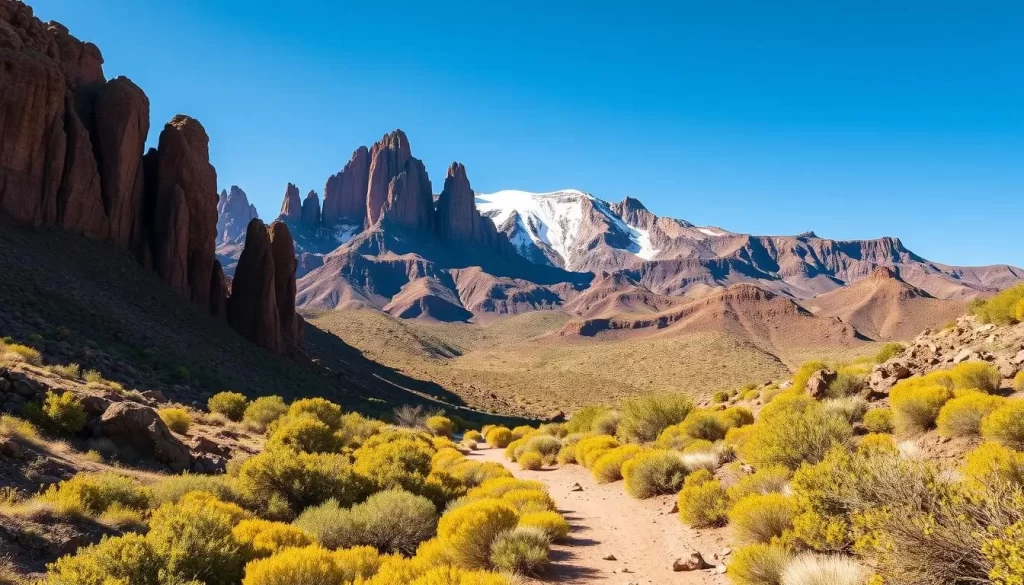
Hiking Options and What to See
The Volcanoes Day Use Area offers a 1-4 mile trail system that allows visitors to hike around and between the cinder cones. When trails are open, you can hike to the top of JA Volcano and Black Volcano, enjoying panoramic views of Albuquerque and the surrounding landscape. However, be aware that some trails may be closed due to restoration efforts, so it’s essential to check the current trail status before planning your hike. You should plan to spend about an hour per mile that you walk.
The parking lot for the Volcanoes Day Use Area is open from 9 am to 5 pm daily, but the trails are accessible from sunrise to sunset. While there are no petroglyphs in this area, the volcanic landscape provides valuable context for understanding the geological and cultural significance of the petroglyphs found elsewhere in the monument.
Best Times to Visit Petroglyph National Monument
Planning your visit to Petroglyph National Monument at the right time can significantly enhance your experience. The monument’s unique landscape and the visibility of its petroglyphs are influenced by the time of year and day you choose to visit.
Seasonal Considerations
Visiting Petroglyph National Monument during the right season can make a big difference in your comfort and the quality of your experience. Summer months (June to August) can be extremely hot, with temperatures often soaring. If you’re visiting during this time, it’s advisable to hike in the morning to avoid the heat. Be prepared for potential monsoon storms and take necessary precautions.
- Early morning visits are recommended during summer for cooler temperatures.
- Be cautious of monsoon storms that can occur in the afternoons during summer.
Time of Day Recommendations
The time of day you visit can also impact your experience, particularly in terms of comfort and the visibility of the petroglyphs. The early morning, between 8:30 and 10:30 am, is considered optimal, especially during summer, as it offers cooler temperatures and favorable lighting for photography.
- The midday sun can create harsh shadows, making petroglyphs harder to see, especially in areas like Piedras Marcadas Canyon.
- Late afternoon visits (2-4 pm) during cooler months can provide warm light that enhances the contrast of the petroglyphs against the dark basalt rocks.
- Consider the direction the petroglyphs face when planning your visit, as the sun’s position affects their visibility.
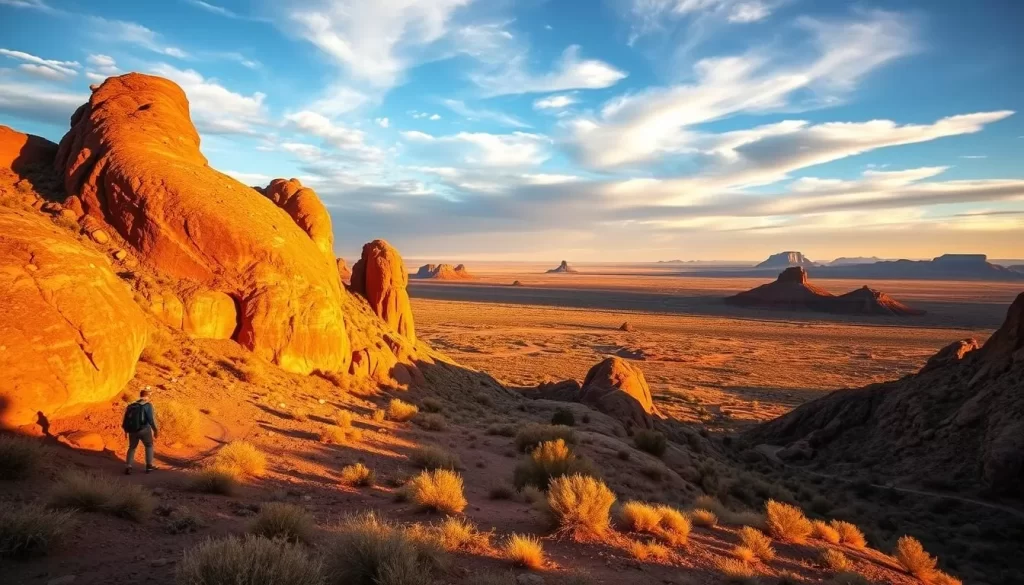
By considering both the season and the time of day, you can optimize your visit to Petroglyph National Monument, ensuring a more enjoyable and enriching experience.
Tips for an Enjoyable Visit
To make the most of your trip to Petroglyph National Monument, it’s essential to be prepared. The monument’s diverse areas and trails offer a unique experience, but they require some planning to navigate effectively.
What to Bring
When visiting Petroglyph National Monument, it’s crucial to pack accordingly. Bring plenty of water, as staying hydrated is key, especially when hiking the trails. Wear comfortable shoes and clothing suitable for the weather. Don’t forget sunscreen, a hat, and sunglasses to protect yourself from the sun. A camera is also a must to capture the stunning petroglyphs and landscapes.
Altitude Considerations
Petroglyph National Monument is situated at a high altitude, which can affect some visitors. Be aware of the potential for altitude sickness, especially if you’re not accustomed to high elevations. Take your time, and drink plenty of water to acclimate. If you’re experiencing any discomfort, consider taking breaks or adjusting your plans accordingly.
Transportation Tips
Having a personal vehicle is highly recommended when visiting Petroglyph National Monument. The different areas of the monument are spread out, and the roads connecting them, such as Golf Course Road, Unser Boulevard, and Paseo Del Norte, are major roads with heavy traffic. While the monument’s website suggests walking or biking between sites, this is not advisable due to the distance and traffic conditions. Ride-sharing services like Uber or Lyft may be expensive and have long wait times on Albuquerque’s West Side. Always lock your vehicle and keep valuables out of sight to prevent break-ins.
By being prepared and aware of the monument’s layout and conditions, you can have a safe and enjoyable visit to Petroglyph National Monument. Plan your trip carefully, and you’ll be able to appreciate the rich cultural and natural beauty it has to offer.
Conclusion: Making the Most of Your Petroglyph National Monument Experience
Nestled in the heart of Albuquerque, Petroglyph National Monument offers a captivating journey through time. This unique cultural treasure and natural landscape is a must-visit destination for anyone interested in history, culture, and the great outdoors.
For first-time visitors, start at the Visitor Center to gain a deeper understanding of the monument’s significance. Then, explore Boca Negra Canyon, followed by either Rinconada or Piedras Marcadas Canyon, depending on your interests and abilities. Remember to stay on designated trails and respect this sacred site by not touching the petroglyphs and practicing Leave No Trace principles.
As you wander through the monument, take your time to observe and appreciate the petroglyphs that have survived for centuries on the volcanic rocks. Petroglyph National Monument is not just a tourist destination; it’s a living cultural landscape that continues to hold deep significance for Native American communities today.
The above is subject to change.
Check back often to TRAVEL.COM for the latest travel tips and deals.
